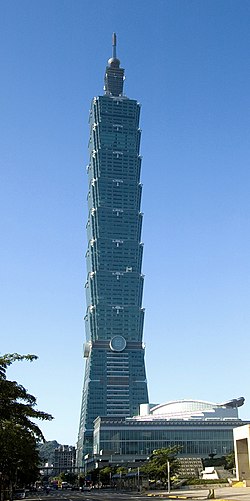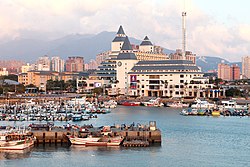
Popular tourist attractions in Taiwan include the following:
Contents
- Attractions
- Historical buildings
- Memorials
- Skyscrapers
- Public places, squares and art centers
- Lighthouses
- Temples
- Pagodas
- Churches
- Mosques
- Museums
- Tourist towns
- Night markets
- Streets
- Natural scenery and forest
- Lakes and reservoirs
- Mountains and cliffs
- National parks
- City parks and gardens
- Rivers
- Waterfalls
- Beaches
- Harbors, wharf and piers
- Hot and cold springs
- Islands and islets
- Leisure resorts
- Cultural centers
- Theme parks
- Zoos and aquariums
- Shopping districts
- Shopping centers
- Educational centers
- Libraries
- Convention centers
- Halls and theaters
- Stadiums
- Transportations
- Attractions by region
- Former attractions
- Festivals
- See also
- References
- External links
